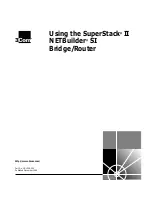
Chapter 3 Configuration Settings and Display
3.4 Volume Management > create volume
ETERNUS CLI User’s Guide
Copyright 2015 FUJITSU LIMITED
P2X0-1030-09ENZ0
146
-size
Optional. This parameter specifies the volume size.
size
Volume capacity
Select whether terabytes (TB), gigabytes (GB), or megabytes (MB) are used
for the capacity.
Example: 1tb, 120gb, 512mb
max
The specified number of volumes is created with the maximum capacity that
can be allocated in the free space of the specified RAID groups.
When creating volumes that are used for Advanced Copy, specify the volume capacity without
specifying "max".
The capacity is secured in KBs for volumes that were created with "max". The capacity is secured
in MBs for volumes that were created by specifying the capacity. Therefore, when using a vol-
ume that was created with "max" for Advanced Copy, the capacity of the copy source volume
may not match the capacity of the copy destination volume, resulting in a copy failure.
•
If a standard volume or a TPV is selected, the volume capacity can be specified (from 24MB to
128TB).
•
If a SDV is selected, this parameter cannot be specified.
•
If SDPV is selected, a pool volume size that is smaller than (or equal to) 2TB can be specified.
•
SDPV must be specified in units of GB.
•
If "max" is specified, volumes are created in the largest free space of the RAID group. The
number of volumes that is created is the value that is specified for the "-count" parameter.
For standard type volumes, the volume capacity is determined so that the capacity of each
created volume is equal and is a multiple of the basic size (stripe size) for the RAID group. If
no volumes are created in the specified RAID groups, the capacity of the volumes is
determined by dividing the RAID group capacity by the number of volumes that are to be
created. The "max" option can be specified for standard (open) volumes, SDPVs, and WSVs.
The method for determining the volume capacity for each volume type is as follows.
-
standard
The remaining capacity is assigned by units of stripe size.
-
sdpv
The remaining capacity is assigned by units of SDPE resolution.
-
wsv
The largest free space is determined by the smallest free capacity among the
concatenated RAID groups. This largest free space is then used to create WSVs in each of
the concatenated RAID groups. The remaining capacity is assigned by units of Wide Stripe
Size.
If the specified RAID groups has the capacity that is larger than the maximum capacity of
the volume in the ETERNUS DX Disk storage system, this command terminates with an
error.
Summary of Contents for Eternus DX410 S2
Page 2: ...This page is intentionally left blank ...
Page 756: ......
















































